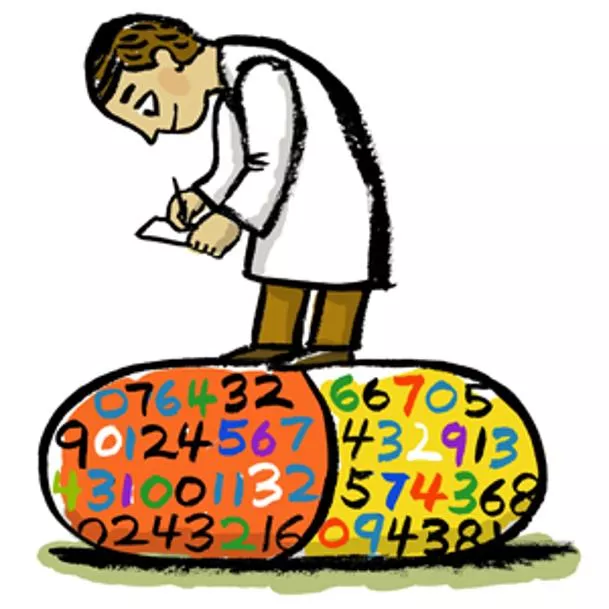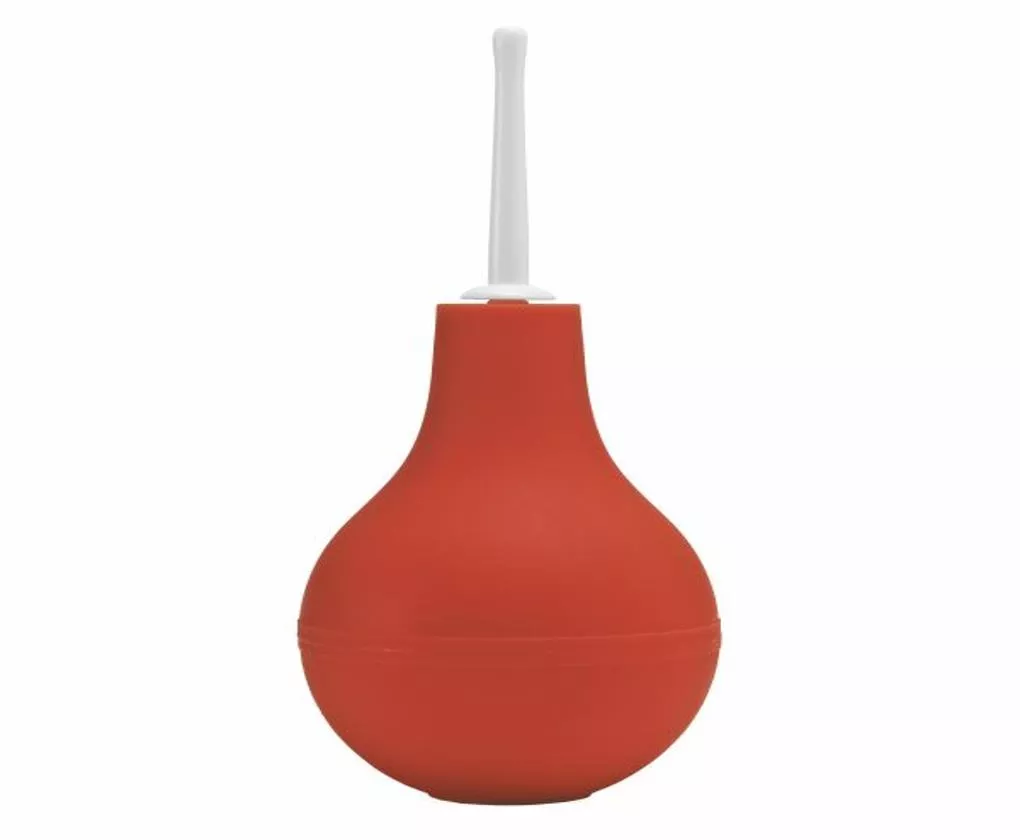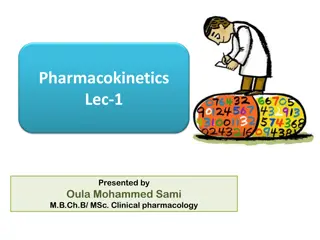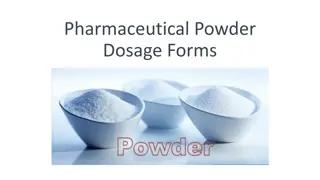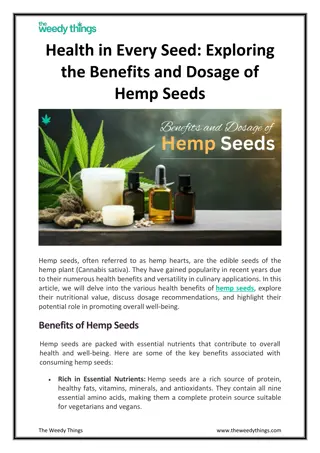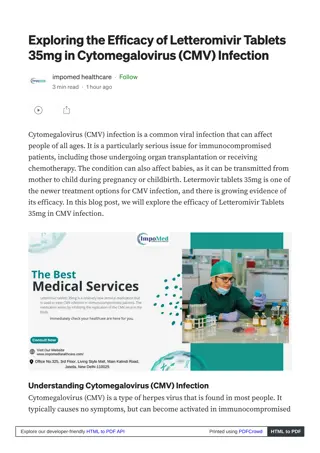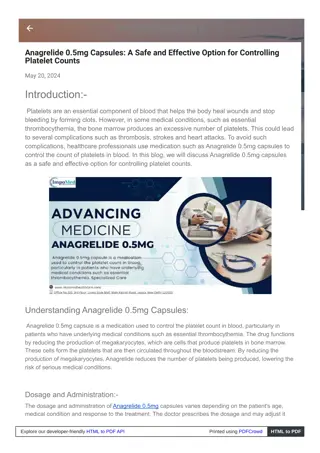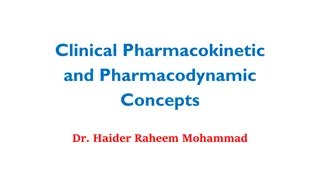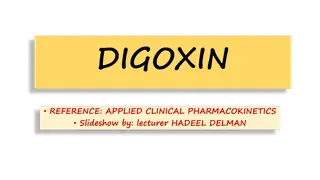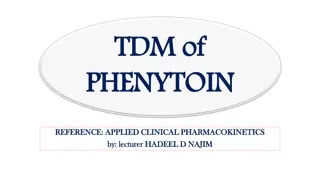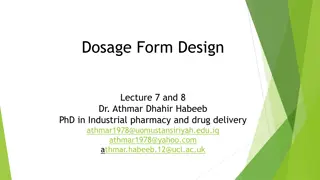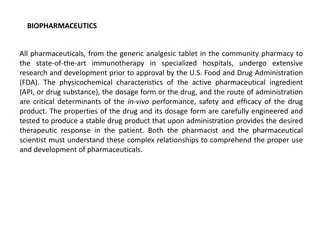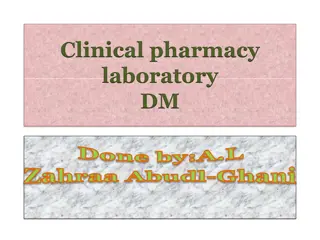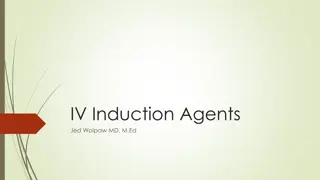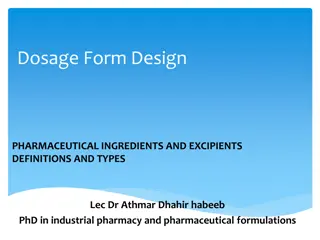Pharmacokinetics Lecture: Clinical Applications and Dosage Regimens
Explore the pharmacokinetics lecture focusing on clinical implications such as changes in drug half-life in various patient conditions. Learn about dosage regimen design and optimization, including considerations for achieving therapeutic drug levels. Discover clinical situations requiring dosage adjustments and the importance of steady-state concentration in drug therapy.
Download Presentation

Please find below an Image/Link to download the presentation.
The content on the website is provided AS IS for your information and personal use only. It may not be sold, licensed, or shared on other websites without obtaining consent from the author. Download presentation by click this link. If you encounter any issues during the download, it is possible that the publisher has removed the file from their server.
E N D
Presentation Transcript
Pharmacokinetics Lec-4 Presented by Oula Mohammed Sami M.B.Ch.B/ MSc. Clinical pharmacology
Mainly post 1*3 used operation
Clinical situations resulting in changes in drug half-life Patients who may have an increasein drug half-life with : ) ( include those 1) Decreased metabolism, for example, when a concomitant drug inhibits metabolism or in hepatic insufficiency, as with cirrhosis. 2) Diminished renal or hepatic blood flow, for example, in cardiogenic shock, heart failure, or hemorrhage 3) Decreased ability to extract drug from plasma (P.P.B), for example, in renal disease. These patients may require a decrease in dosage or less frequent dosingintervals. In contrast, the half-life of a drug may be decreased hepatic blood flow, increased metabolism, or decreased protein binding. ) ( by increased This may necessitate higher doses or more frequent dosing intervals.
Design and Optimization of Dosage Regimen Selection of a regimen depends on various patient and drug factors, including how rapidly therapeutic levels of a drug must be achieved. Therapy may consist of a single dose of a drug, for example, a sleep-inducing agent, such as zolpidem. More commonly, drugs are continually administered, either as an IV infusion (Continuous) or in IV or oral fixed-dose/fixed-time interval regimens (repeated administration) (for example, one tablet every 4 hours ). Continuous or repeated administration results in accumulation of the drug until a steady state occurs. Steady-state concentration is reached when the rate of drug elimination is equal to the rate of drug administration, such that plasma and tissue levels remain relatively constant.
Continuous infusion regimens With continuous IV infusion, the rate of drug entry into the body is constant. Most drugs exhibit first-order elimination, that is, a constant fraction of the drug is cleared per unit of time. Therefore, the rate of drug elimination increases proportionately as the plasma concentration increases.
Following initiation of a continuous IV infusion, the plasma concentration of a drug rises until a steady state (rate of drug elimination equals rate of drug administration) is reached, at which point the plasma concentration of the drug remains constant. 3.3 t1/2
Influence of infusion rate on steady-state concentration The steady-state plasma concentration (Css) is directly proportional to the infusion rate. For example, if the infusion rate is doubled, the Css is doubled. Furthermore, the Css is inversely proportional to the clearance of the drug. Thus, any factor that decreases clearance, such as liver or kidney disease, increases the Css of an infused drug (assuming Vd remains constant). Factors that increase clearance, such as increased metabolism, decrease the Css . ( t1/2 CL) Ro = rate of drug infusion Css = steady-state concentration.
Time to reach steady-state drug concentration The concentration of a drug rises from zero at the start of the infusion to its ultimate steady- state level, Css . The rate constant for attainment of steady state is the rate constant for total body elimination of the drug. Thus, 50% of Css of a drug is observed after the time elapsed, since the infusion, t, is equal to t1/2 , where t1/2 is the time required for the drug concentration to change by 50%. After another half-life, the drug concentration approaches 75% of Css . The drug concentration is 87.5% of Css at 3 half-lives and 90% at 3.3 halflives. Thus, a drug reaches steady state in about 4 to 5 half-lives The sole determinant of the rate that a drug achieves steady state is the half-life (t1/2 ) of the drug, and this rate is influenced only by factors that affect half-life. The rate of approach to steady state is not affected by the rate of infusion. When the infusion is stopped, the plasma concentration of a drug declines (washes out) to zero with the same time course observed in approaching steady state .
pharmacokinetic study of a new antihypertensive drug is being conducted in healthy human volunteers. The half-life of the drug after administration by continuous intravenous infusion is 12 hours. Which of the following best approximates the time for the drug to reach steady state? . 24 hours B. 48 hours C. 72 hours D. 120 hours E. 240 hours
Fixed-dose/fixed-time regimens Administration of a drug by fixed doses rather than by continuous infusion is often more convenient. However, fixed doses of IV or oral medications given at fixed intervals result in time-dependent fluctuations in the circulating level of drug, which contrasts with the smooth ascent of drug concentration with continuousinfusion. Multiple IV injections When a drug is given repeatedly at regular intervals, the plasma concentration increases until a steady state is reached . Some drug from the first dose remains in the body when the second dose is administered, some from the second dose remains when the third dose is given, and so forth. Therefore, the drug accumulates until, within the dosing interval, the rate of drug elimination equals the rate of drug administration and a steady state is achieved at 4-5 t 1/2 (Rule of five)
Effect of dosing frequency With repeated administration at regular intervals, the plasma concentration of a drug oscillates about a mean. Using smaller doses at shorter intervals reduces the amplitude of fluctuations in drug concentration. However, the dosing frequency changes neither the magnitude of Css nor the rate of achieving Css .
Example of achievement of steady state using different dosage regimens Curve B shows the amount of drug in the body when 1 unit of a drug is administered IV and repeated at a dosing interval that corresponds to the half-life of the drug. At the end of the first dosing interval, 0.50 units of drug remain from the first dose when the second dose is administered. At the end of the second dosing interval, 0.75 units are present when the third dose is given. The minimal amount of drug remaining during the dosing interval progressively approaches a value of 1.00 unit, whereas the maximal value immediately following drug administration progressively approaches 2.00 units. Therefore, at the steady state, 1.00 unit of drug is lost during the dosing interval, which is exactly matched by the rate of administration. That is, the rate in equals the rate out. As in the case for IV infusion, 90% of the steady-state value is achieved in 3.3 half-lives.
Multiple oral administrations Most drugs administered on an outpatient basis medications taken at a specific dose one, two, or more times daily. In contrast to IV injection, orally administered drugs may be absorbed slowly, and the plasma concentration of the drug is influenced by both the rate of absorption and the rate of elimination are oral
Optimization of dose If the therapeutic window of the drug is small (for example, digoxin or lithium), extra cautionshould be taken in selecting a dosage regimen, and drug levels should be monitored to ensure attainment of the therapeutic range. Drug regimens are administered as a maintenance dose and may require a loading dose if rapid effects are warranted
Loading dose Sometimes rapid obtainment of desired plasma levels is needed (for example, in serious infections or arrhythmias). Therefore, a loading dose of drug is administered to achieve the desired plasma level rapidly, followed by a maintenance dose to maintain the steady state . Loading dose = (Vd ) (desired steady-state plasma concentration)/F Disadvantages of loading doses include increased risk of drug toxicity and a longer time for the plasma concentration to fall if excess levels occur.
Maintenance dose Drugs are generally administered to maintain a Css within the therapeutic window. It takes 4 to 5 half-lives for a drug to achieve Css . To achieve a given concentration, the rate of administration and the rate of elimination of the drug are important. The dosing rate can be determined by knowing the target concentration in plasma (Cp), clearance (CL) of the drug from the systemic circulation, and the fraction (F) absorbed (bioavailability):
A 64-year-old female patient (60 kg) is treated with experimental Drug A for type 2 diabetes. Drug A is available as tablets with an oral bioavailability of 90%. If the Vd is 2 L/kg and the desired steady-state plasma concentration is 3.0 mg/L, which of the following is the most appropriate oral loading dose of Drug A? A. 6 mg B. B. 6.66 mg C. C. 108 mg D. D. 360 mg E. E. 400 mg loading dose = [(Vd ) (desired steady-state plasma concentration)/F]. The Vd in this case is corrected to the patient s weight is 120 L. The F value is 0.9 (because bioavailability is 90%, that is, 90/100 = 0.9). Thus, loading dose = (120 L 3.0 mg/L)/0.9 = 400 mg.
Accumulation of drug administered orally without a loading dose and with a single oral loading dose administered at t = 0.
Dose adjustment For drugs with a defined therapeutic range, drug concentrations are measured, and the dosage and frequency are adjusted to obtain the desired levels. When determining a dosage adjustment, Vd can be used to calculate the amount of drug needed to achieve a desired plasma concentration. For example, assume a heart failure patient is not well controlled due to inadequate plasma levels of digoxin. Suppose the concentration of digoxin in the plasma is C1 and the desired target concentration is C2 , a higher concentration. The following calculation can be used to determine how much additional digoxin should be administered to bring the level from C1 to C2 . (Vd )(C1 ) = Amount of drug initially in the body (Vd )(C2 ) = Amount of drug in the body needed to achieve the desired plasma concentration The difference between the two values is the additional dosage needed, which equals Vd (C2 C1 ).
A 74-year-old man was admitted to the hospital for treatment of heart failure. He received 160 mcg of digoxin intravenously, and the plasma digoxin level was 0.4 ng/mL. If the desired plasma concentration of digoxin for optimal therapeutic activity in heart failure is 1.2 ng/mL, and the patient has an estimated Vd of 400 L, calculate the additional dose of digoxin needed for this patient to achieve the desired plasma concentration. A. 128 mcg B. B. 160 mcg C. C. 320 mcg D. D. 480 mcg E. E. 640 mcg the desired plasma concentration can be calculated using the equation Vd (C2 C1 ).
Pharmacogenetics Pharmacogenetics: : the study of genetic factors that underlie variation in drug response. Genetic variations in enzymes Genetic variations in immune system function Polygenic effects Others
Genetic variations in enzymes Phase I Phase II others
Genetic variations in enzymes Phase I enzymes: CYP2C19 poor metabolizers have a diminished antiplatelet effect, clopidogrel is a prodrug, and CYP2C19 activity is required to convert it to the active metabolite. Phase II enzymes: diclofenac, undergo extensive glucuronidation. Allelic variants of UGT2B7appeared to predispose individuals to the formation and accumulation of reactive diclofenac metabolites leading to hepatotoxicity. Other enzymes : Glucose 6-phosphate dehydrogenase (G6PD) deficiency is a hereditary abnormality in the activity of an erythrocyte enzyme. This enzyme (G6PD), is essential for assuring a normal life span for red blood cells. The deficiency may provoke sudden destruction of RBCs and lead to hemolytic anemia with jaundice following the intake of fava beans, infection and various drugs aspirin Sulfonamides.
clopidogrel (prodrug ) CYP2C19 active antiplatelet effect
diclofenac, undergo extensive glucuronidation. Allelic variants of UGT2B7appeared to predispose to hepatotoxicity.
Genetic variations in immune system function Hypersensitivity reactions to various drugs can range from mild rashes to severe skin toxicities. Among the worst hypersensitivity reactions are liver injury, toxic epidermal necrosis (TEN), and Stevens-Johnson syndrome (SJS). E.g. Abacavir is associated with SJS, of unknown mechanism.
Polygenic effects Warfarin, a vitamin K antagonist, oral anticoagulant . The pharmacologic action of warfarin is mediated through inactivation of VKORC1. Individuals with decreased VKORC1 expression, are at increased risk for excessive anticoagulation . Furthermore, patients with reduced-function CYP2C9 genotypes are at increased risk for bleeding due to decreased metabolic clearance.


